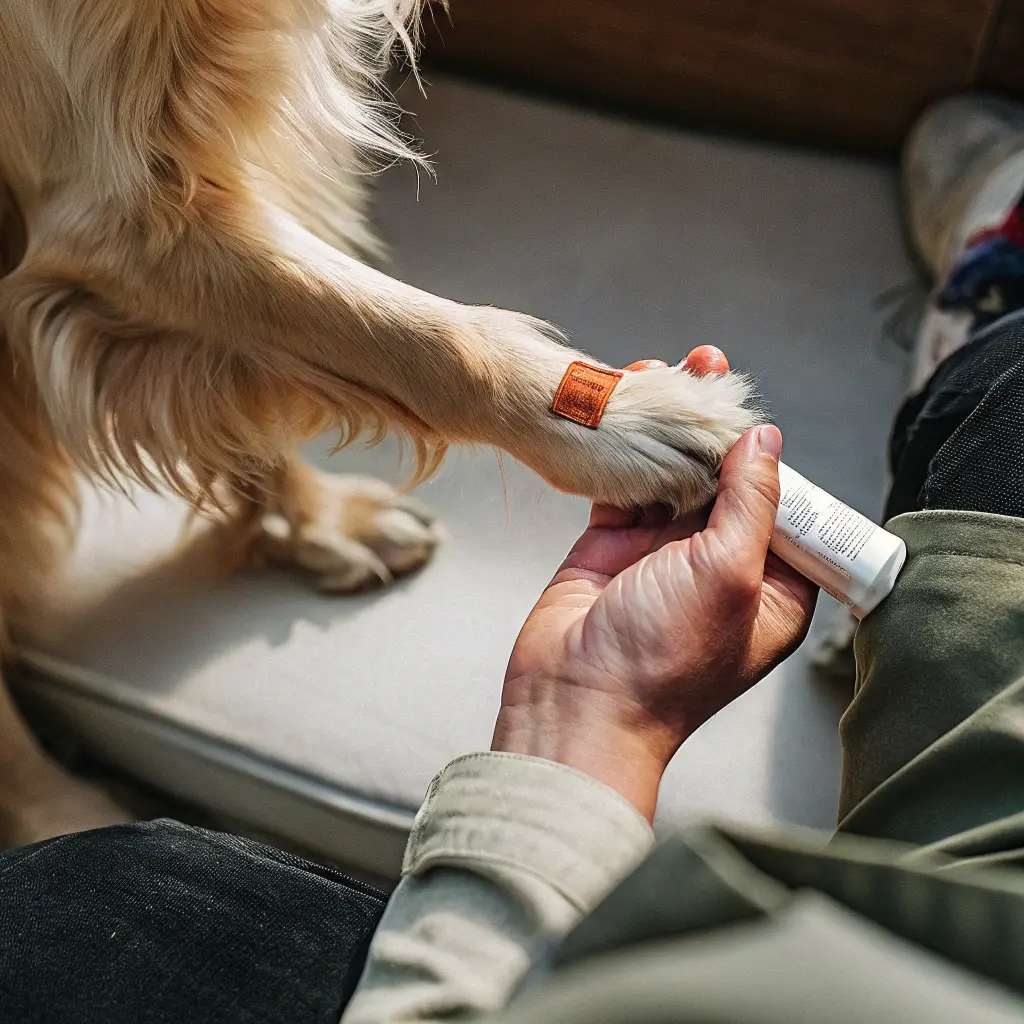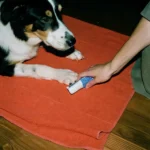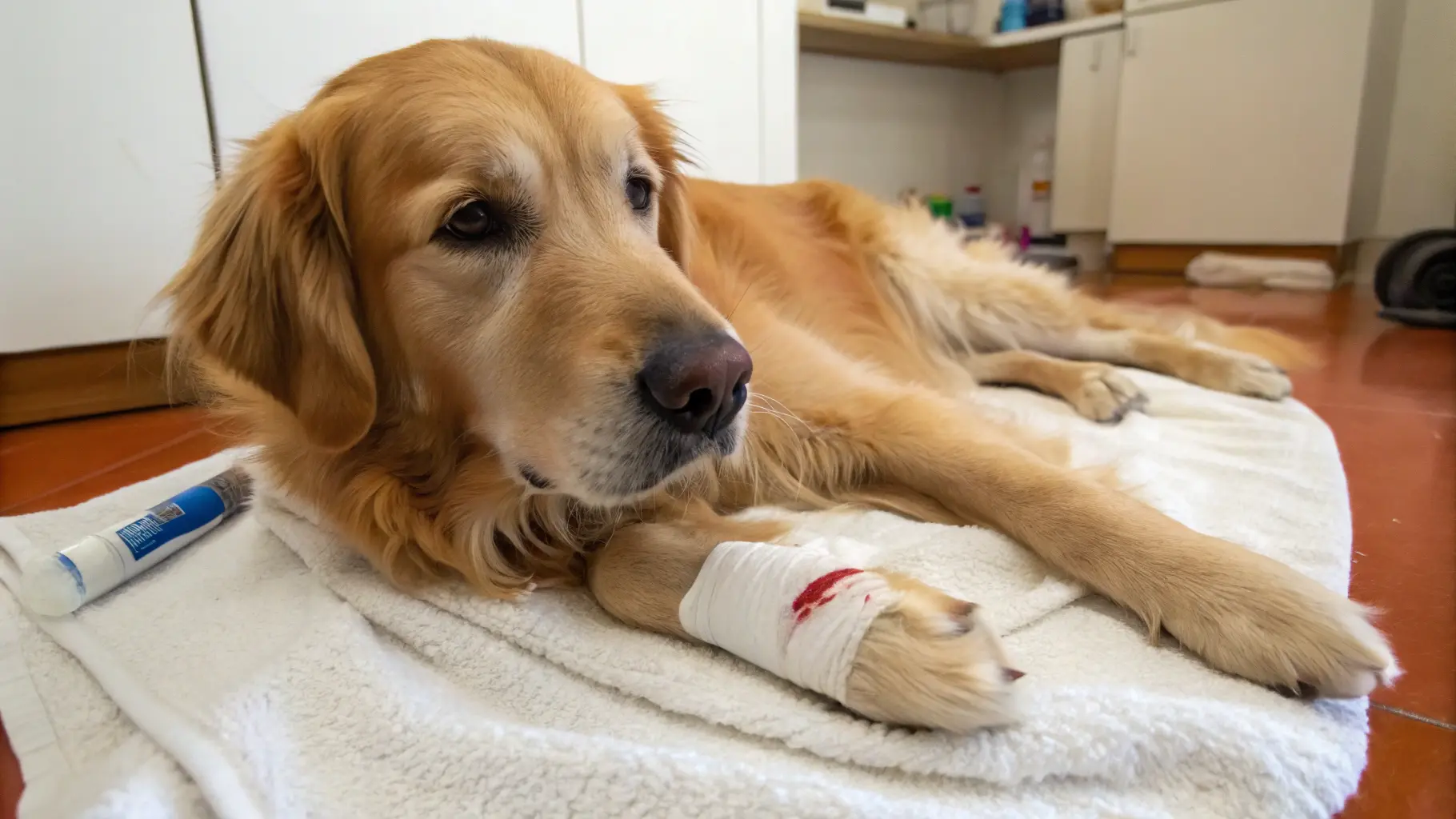Can I Use Neosporin on My Dog? Safe Options & Risks to Know
Your dog comes bounding in from the backyard, tail wagging—but wait, what’s that scratch on their paw? Instinctively, you reach for the Neosporin in your medicine cabinet. But pause—is it safe to use Neosporin on my dog?
Pet owners often wonder if human medications like Neosporin are safe for their furry friends. While Neosporin is a trusted go-to for minor cuts and scrapes in humans, using it on dogs requires careful consideration. This article will explore whether can I use Neosporin on my dog is a safe choice, potential risks, alternatives to Neosporin , and how to properly care for your dog’s wounds.
By the end of this article, you’ll know exactly what to do when your dog has a minor injury—and how to keep them safe.
Table of Contents
Table of Contents
Can I Use Neosporin on My Dog? A Comprehensive Answer
Is Neosporin Safe for Dogs?
Neosporin is an over-the-counter topical antibiotic ointment containing active ingredients like bacitracin, neomycin, and polymyxin B. These ingredients help prevent bacterial infections in minor cuts, scrapes, and burns.
“If you are wondering whether you can use Neosporin on your dog, the short answer is yes—but with caution. Neosporin is generally considered safe for external use on dogs in small amounts. However, there are important caveats. The biggest concern is ingestion. Dogs are notorious for licking their wounds, and ingesting Neosporin can lead to gastrointestinal upset or toxicity due to its ingredients.
To ensure safety, always monitor your dog after applying Neosporin . If your dog licks the wound frequently, consider safer alternatives. For more information, check out this study on topical antibiotics for pets.
Risks of Using Neosporin on Dogs
While Neosporin is generally safe for external use, it’s not without risks. Here’s a breakdown of potential side effects:
| Side Effect | Symptoms |
| Allergic Reaction | Redness, swelling, itching |
| Ingestion Toxicity | Vomiting, diarrhea, lethargy |
| Skin Irritation | Dryness, flaking |
If you notice any of these symptoms after using Neosporin , stop immediately and consult your veterinarian.
When Should You Avoid Neosporin?
Neosporin should not be used in certain situations:
- Deep wounds or puncture wounds
- Infected areas (signs include pus, foul odor, or excessive swelling)
- Sensitive areas like eyes, ears, or mucous membranes
When in doubt, always consult your vet before applying any medication.

Alternatives to Neosporin for Dogs
What Are Some Safe Alternatives to Neosporin?
If you’re wondering about alternative to Neosporin for dogs , there are pet-safe options available. Products like Vetericyn Wound & Skin Care Spray or Bactine Spray for Dogs are specifically formulated for animals and are free from harmful ingredients.
Can I Put Aquaphor on My Dog?
Aquaphor is a popular human ointment used to moisturize and protect skin. While it’s non-toxic and generally safe for dogs, it lacks antibacterial properties. This means it won’t help prevent infections in open wounds. Use it only for dry or cracked skin, not for cuts or scrapes.
Natural Remedies for Minor Wounds
For pet parents who prefer natural options, here are some safe remedies for alternative to Neosporin for dogs :
- Pure aloe vera gel
- Coconut oil (antimicrobial and soothing)
- Calendula cream (promotes healing)
Always ensure the product is free from additives or essential oils that could irritate your dog’s skin.
How to Prevent Your Dog from Licking Their Wound
Why Does My Dog Lick Their Wound?
Dogs instinctively lick their wounds to clean them, but this behavior can do more harm than good. Excessive licking can introduce bacteria, delay healing, or cause further irritation.
Tips to Stop Your Dog from Licking
To prevent licking, try these solutions:
- Use an Elizabethan collar (cone) or inflatable collar
- Apply a bitter spray around the wound (safe for pets)
- Cover the wound with a bandage or pet-safe wrap
For more details, read our article: “[Is it okay if my dog licked Neosporin?]”
Special Cases: Peroxide in Dogs’ Ears and Other Concerns
Can I Use Hydrogen Peroxide on My Dog?
Hydrogen peroxide is commonly used to clean minor wounds in humans, but it’s not ideal for dogs. It can damage healthy tissue and delay healing. Additionally, using peroxide in dogs ear can cause irritation or even chemical burns.
What Happens If Peroxide Gets in My Dog’s Ear?
If peroxide gets into your dog’s ear, watch for signs of discomfort such as head shaking, scratching, or redness. If these symptoms occur, contact your vet immediately.
Callout Box: “If your dog shows signs of discomfort after using peroxide, contact your vet immediately.”
Expert Advice: When to See a Vet
Signs That Your Dog Needs Veterinary Care
Some injuries require professional attention. Seek veterinary care if you notice:
- Persistent bleeding that doesn’t stop
- Swelling, redness, or discharge
- Foul odor coming from the wound
For more insights, refer to this AVMA guideline .
How Vets Treat Dog Wounds Differently
Vets may use specialized treatments like sutures, prescription antibiotics, or advanced dressings to ensure proper healing.
Common Questions Pet Owners Ask
Can I put vaseline on my dog?
Vaseline isn’t harmful but doesn’t aid healing. It’s best used for dry noses or paws, not open wounds. For more details, read our article: “[Can I put vaseline on my dog?]”
Can you use human Neosporin on dogs?
While Neosporin can be used cautiously on dogs, there are safer alternatives available. For a deeper dive into this topic, check out our article: “[Can you use human Neosporin on dogs?]”
Is it okay if my dog licked Neosporin?
If your dog licks Neosporin , monitor them for signs of gastrointestinal upset or toxicity. For more guidance, read our article: “[Is it okay if my dog licked Neosporin?]”
FAQs
Can I use Neosporin on my dog’s wound?
Yes, but only for minor wounds. Apply a thin layer of Neosporin Original (without pain relief) and ensure your dog doesn’t lick it. However, for deep cuts, infections, or persistent wounds, consult your vet.
Is Neosporin poisonous to dogs?
Can I use Neosporin on my dog safely? While it’s not highly toxic, licking it may cause stomach issues, especially if it contains lidocaine or hydrocortisone. Always check the ingredients before applying.
What is the best alternative to Neosporin for dogs?
If you’re asking, “Can I use Neosporin on my dog, or is there a better option?”, veterinarians recommend pet-safe antiseptics like VetriScience Antiseptic Ointment or Silver Sulfadiazine Cream.
Can I use Neosporin for dogs at home?

If you’re wondering, “Can I use Neosporin on my dog for home treatment?”, the answer is yes—but only for minor scrapes. Clean the wound well, use a small amount, and prevent your dog from licking it.
What antibiotic cream is approved for dogs?
Instead of questioning, “Can I use Neosporin on my dog?”, consider Betagen Topical Spray or Silver Sulfadiazine Cream, which are safer and more effective for pets.
Can I put Neosporin on my dog’s ear?
No. If you’re wondering, “Can I use Neosporin on my dog’s ear?”, it’s not recommended. Ear infections require specialized treatments, not over-the-counter antibiotic creams.
What should I do if my dog licked Neosporin?
If your dog licked it after you asked, “Can I use Neosporin on my dog?”, monitor for symptoms like vomiting, diarrhea, or lethargy. Contact your vet if symptoms appear.
Is Neosporin good for open wounds on dogs?
Can I use Neosporin on my dog’s open wound? It may help prevent infections, but veterinary antiseptics are safer and more effective.
What do vets prescribe instead of Neosporin for dogs?
Instead of asking, “Can I use Neosporin on my dog?”, check with your vet for Cephalexin (oral antibiotic) or Malacetic wipes for skin infections.
Can human Neosporin be used on dogs?
While many ask, “Can I use Neosporin on my dog?”, it’s important to note that human ointments aren’t always safe due to added ingredients that may be toxic.
Conclusion and Final Thoughts
In summary, while can I use Neosporin on my dog is a valid question, Neosporin can be used cautiously for minor wounds. However, safer alternatives to Neosporin for dogs exist, including pet-safe sprays and natural remedies. Always monitor your dog and consult a vet if unsure.
Want to Be the Best Dog Parent You Can Be?
Want to deepen your knowledge about dog care? Check out my ebook For the Love of Dogs , where I share expert advice on keeping your furry friend happy and healthy.
Additional Resources and References
| Source | Link |
| AVMA Guidelines | www.avma.org |
| Study on Topical Antibiotics | ncbi.nlm.nih.gov/?term=neosporin+ |
These resources provide further insights into pet wound care and treatment options.

